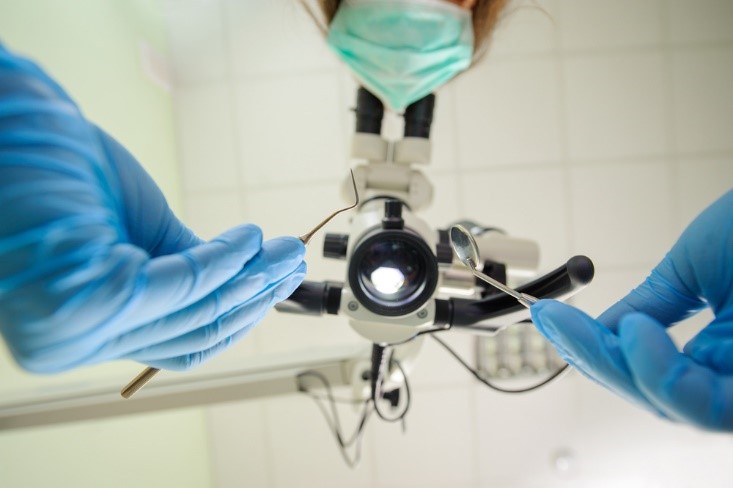Effective infection control protects patients and staff while building trust and enhancing the reputation of your practice. This article explains the essential strategies for optimizing infection control in dental settings, covering crucial aspects such as sterilization procedures, personal protective equipment (PPE) usage, and creating a safe working environment.

The Importance of Rigorous Sterilization Procedures
The cornerstone of infection control in any dental practice is a robust sterilization protocol. Implementing and adhering to strict sterilization procedures is crucial for preventing the spread of infections.
- Instrument Sterilization:
- Use FDA-approved sterilizers, such as autoclaves, for heat-tolerant instruments.
- Employ chemical sterilants or high-level disinfectants for heat-sensitive items.
- Regularly maintain and test sterilization equipment to ensure efficacy.
- Proper Cleaning Before Sterilization:
- Thoroughly clean instruments to remove debris before sterilization.
- Use ultrasonic cleaners or washer-disinfectors for consistent and thorough cleaning.
- Sterilization Monitoring:
- Utilize biological indicators weekly to verify sterilization effectiveness.
- Use chemical indicators in each sterilization load to ensure proper conditions are met.
- Instrument Storage:
- Store sterilized instruments in sealed pouches or wrapped containers.
- Implement a first-in, first-out system to ensure older sterilized items are used first.
Effective Use of Personal Protective Equipment (PPE)
Personal protective equipment is a critical barrier against the transmission of infectious agents. Proper use of PPE safeguards both dental professionals and patients.
- Gloves:
- Change gloves between patients and when they become torn or contaminated.
- Never wash or reuse disposable gloves.
- Masks and Respirators:
- Use ASTM Level 3 surgical masks for most dental procedures.
- Employ N95 respirators or equivalent for aerosol-generating procedures.
- Replace masks between patients or when they become moist or visibly soiled.
- Eye Protection:
- Wear goggles or face shields to protect against splashes and aerosols.
- Clean and disinfect reusable eye protection between patients.
- Protective Clothing:
- Use disposable gowns or launder reusable gowns after each use.
- Change protective clothing if visibly soiled or when leaving the treatment area.
Creating a Safe Working Environment
A comprehensive approach to infection control extends beyond individual practices to encompass the entire dental office environment.
- Surface Disinfection:
- Use EPA-registered hospital-grade disinfectants on clinical contact surfaces.
- Cover difficult-to-clean surfaces with barriers and change between patients.
- Waterline Maintenance:
- Implement a water quality management program to prevent biofilm formation.
- Use sterile water or saline for surgical procedures.
- Proper Waste Management:
- Follow local regulations for the disposal of biohazardous waste.
- Use puncture-resistant containers for sharp objects.
- Air Quality Control:
- Ensure proper ventilation in the dental operatory.
- Consider using high-volume evacuators and dental dams to minimize aerosols.
- Staff Training and Compliance:
- Provide regular training on infection control protocols.
- Conduct periodic audits to ensure compliance with established procedures.
Leveraging Technology for Enhanced Infection Control
Advancements in dental technology have introduced innovative solutions for infection control. Companies like Young Specialties are at the forefront of developing customized treatment solutions that improve clinical outcomes and infection control. These may include:
- Touchless equipment and dispensers to reduce surface contamination.
- Advanced air purification systems for improved air quality.
- Disposable, single-use instruments for certain procedures.
- Digital workflows that minimize cross-contamination risks.
Staying Informed and Adaptable
The field of infection control is continually evolving, especially in light of global health challenges. Stay informed about the latest guidelines from organizations such as the CDC and OSHA. Be prepared to adapt your protocols as new information and technologies become available.
Conclusion
Optimizing infection control in your dental practice is an ongoing process that requires diligence, knowledge, and a commitment to excellence. By implementing robust sterilization procedures, properly utilizing PPE, creating a safe working environment, and leveraging cutting-edge technologies, you can significantly reduce the risk of infections in your practice.
Remember, effective infection control is not just about following rules—it’s about fostering a culture of safety that permeates every aspect of your dental practice. By prioritizing infection control, you not only protect your patients and staff but also demonstrate your commitment to providing the highest standard of care.
As you strive to enhance your infection control measures, consider partnering with industry leaders like Young Specialties, who offer innovative, customized solutions designed to meet the unique needs of various dental specialties. Their expertise can help you implement state-of-the-art infection control practices that will position your practice for growth and success in an ever-evolving healthcare landscape.



